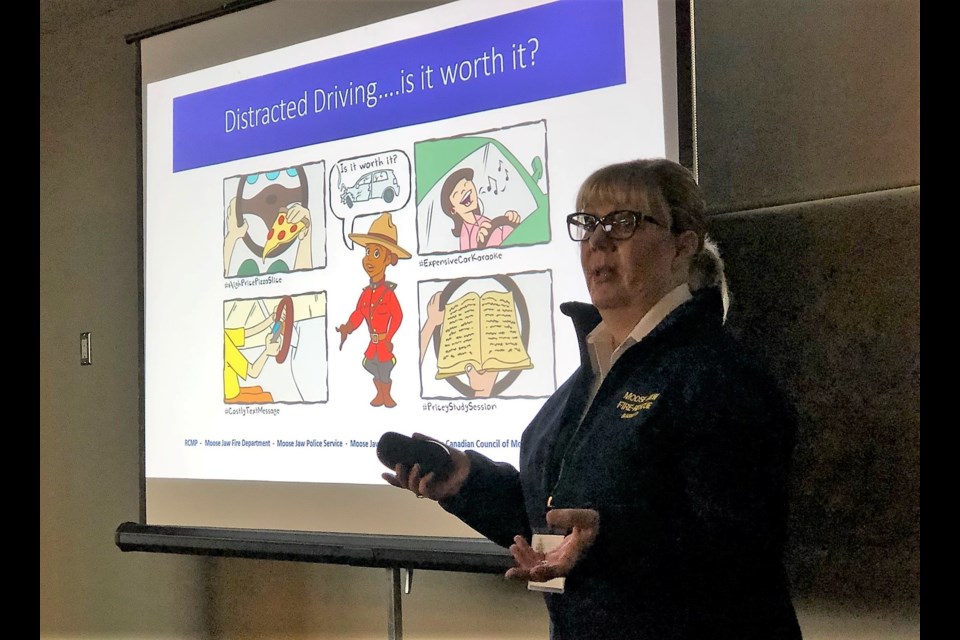When Cathie Bassett and Sgt. Tim Schwartz go to schools, they conclude their presentation on distracted driving with a call for the students to share the message with their circle – their friends, families and loved ones.
When Bassett, public education officer with the Moose Jaw and District Fire Department and Schwartz, from the Moose Jaw RCMP detachment, shared their presentation at the Saskatchewan Association of Fire Chiefs convention in Moose Jaw Friday, they asked the attendees to share their presentation with their circle too.
“We saw this as a problem and it’s huge,” Bassett said. “So we wanted to do something about it and we want to help you guys provide it in your communities.”
Bassett and Moose Jaw Fire Chief Rod Montgomery helped lead the charge on the outreach program that also involves the RCMP, the Moose Jaw Police Service and the Moose Jaw and District EMS. The program now targets Grade 9 students in small groups hoping to get the message of the dangers of distracted driving through before they get behind the wheel.
“We all know that it takes your eyes off the road and takes you away from the responsibility of driving that vehicle that you’re in and as a result, you have a crash,” Schwartz said. “The big four killers on our highways are speed, impaired driving, seat belts and distracted driving.”
The statistics related to distracted driving are sobering. Driving using hand-held devices are four times more likely to get into a collision serious enough to cause injury over drivers who are focused on the road. Driver distraction is a factor in 8 out of 10 car crashes in North America each year.
“Distracted driving is a form of impaired driving,” Bassett said. “A driver’s judgement is compromised when they aren’t fully focused on the road. In Ontario, distracted driving is the number one cause of fatalities in (motor vehicle collisions), not drunk driving, distracted driving. In Saskatchewan, it’s number two and it’s climbing fast.”
When SGI made distracted driving its spotlight in October of 2018, there were 793 tickets given out and 688 were for cellphone use. The rest were for driving with undue care and attention.
“That is the highest amount that Saskatchewan has ever given out,” Bassett said. “So it has increased.”
The penalties have also increased. In addition to a fine for a first offence, if a motorist receives two distracted driving tickets in 12 months the vehicle they are driving is impounded for seven days at the owner’s expense.
The law has also changed the wording from “using” a cellphone while driving to “holding, viewing, using or manipulating” a cellphone while driving. Schwartz added that even if you are stopped at a stop sign or in a drive-thru, if your car is not in park, you are still driving and could be ticketed.
While cellphones are the main cause of distracted driving, it is far from the only cause. Eating while driving, children in the backseat, grooming, often make-up, though the presenters related a story about man who was pulled over while shaving, and pets in a vehicle are all examples of distracted driving.
To help bring home the idea that a second or two looking at your phone could change your life, the presentation ended with “Josh’s Story”, a powerful video about a teenager who died after being in a distracted driving accident.




